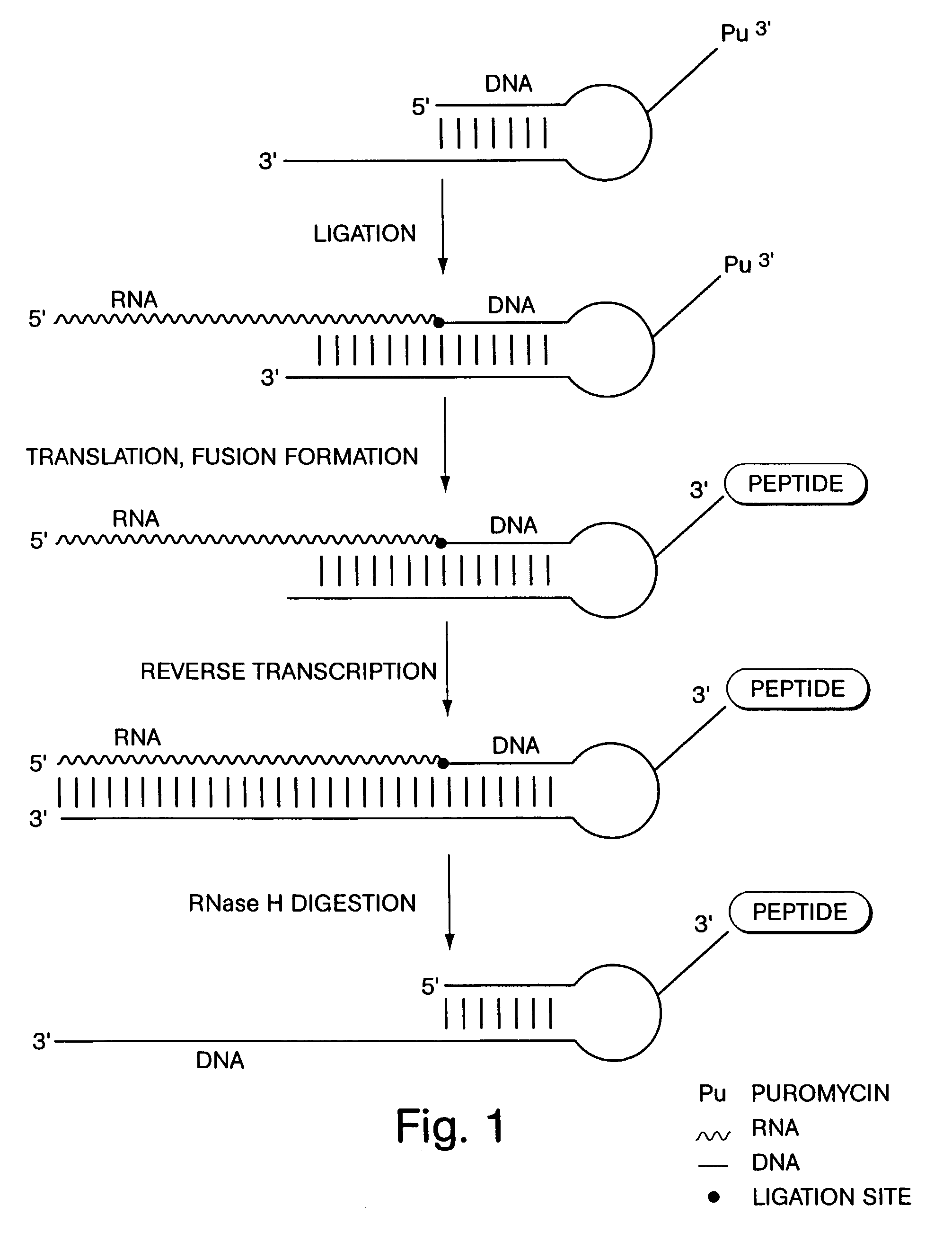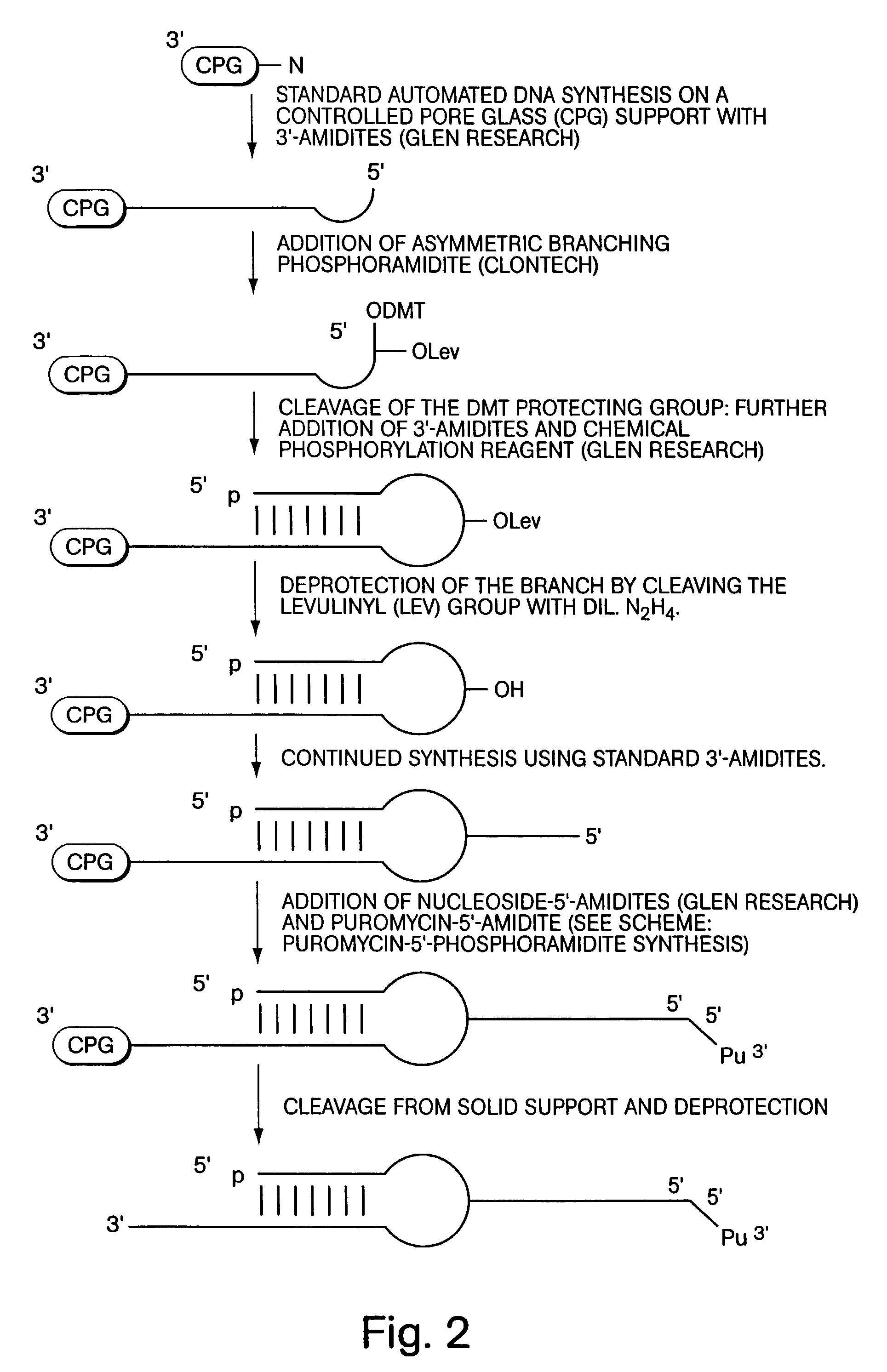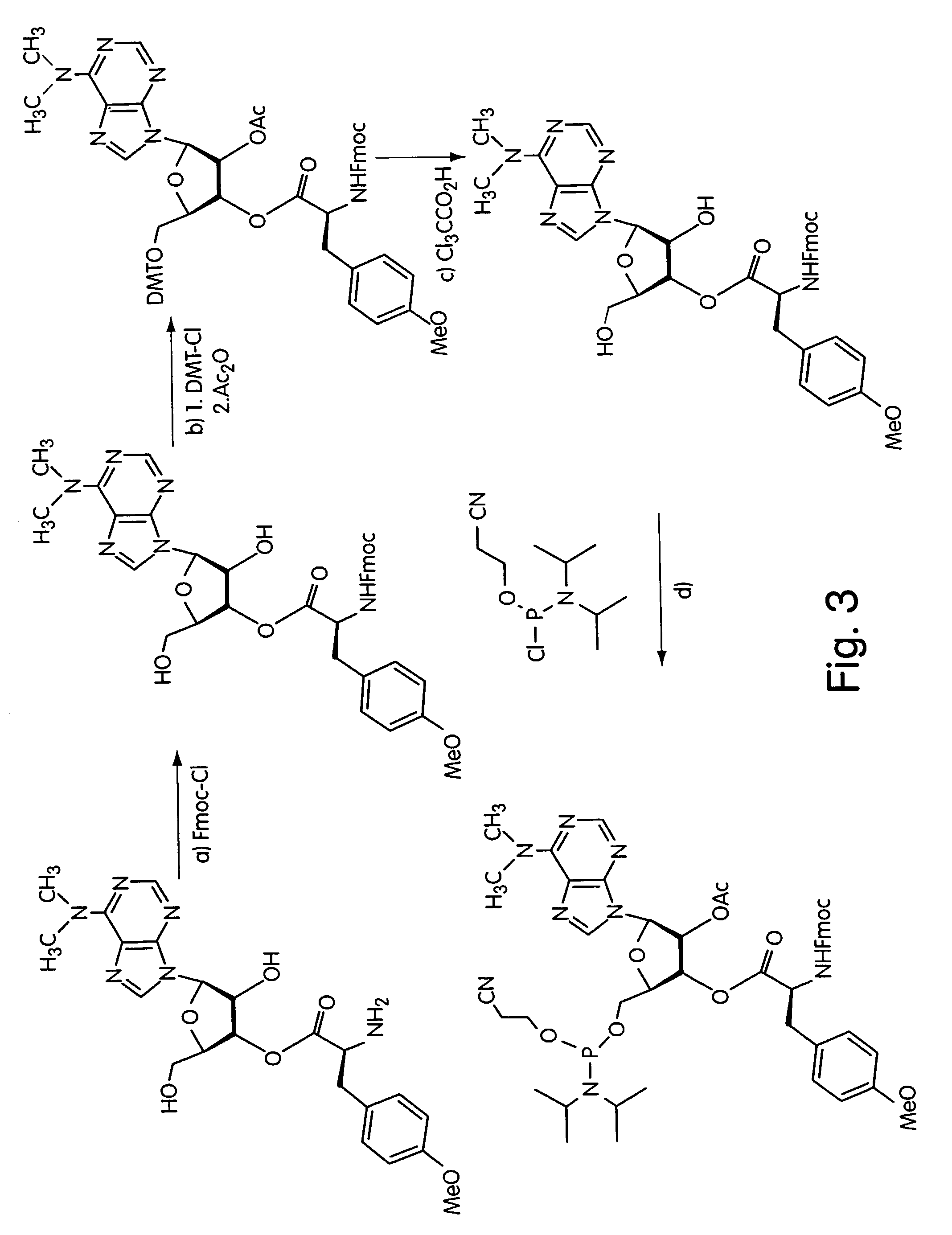DNA-protein fusions and uses thereof
a technology of dna-proteins and fusions, applied in the field of dnaprotein fusions, can solve problems such as irreversible loss of encoded information
- Summary
- Abstract
- Description
- Claims
- Application Information
AI Technical Summary
Benefits of technology
Problems solved by technology
Method used
Image
Examples
Embodiment Construction
[0048]There are now provided below a number of exemplary techniques for the production of DNA-protein fusions, and descriptions for their use. These examples are provided for the purpose of illustrating, and not limiting, the invention.
Type A1: Template-Directed Ligation of a Puromycin-Modified Hairpin-Like Structure to an mRNA
[0049]According to a first exemplary approach, DNA-protein fusions are generated by ligating a puromycin-modified DNA hairpin-like structure to an mRNA molecule, as illustrated in FIG. 1. The first step of this procedure is the attachment of puromycin to the hairpin, and this may be accomplished by a number of techniques, one of which is shown in FIG. 2. By this approach, a DNA hairpin is synthesized with a puromycin-terminated side chain branching out from the DNA molecule. This construct may be generated using an asymmetric branched phosphoramidite (Clontech, Palo Alto, Calif.) in any standard automated DNA synthesis of the hairpin structure (see, for exampl...
PUM
| Property | Measurement | Unit |
|---|---|---|
| volume | aaaaa | aaaaa |
| volume | aaaaa | aaaaa |
| total volume | aaaaa | aaaaa |
Abstract
Description
Claims
Application Information
 Login to View More
Login to View More - R&D
- Intellectual Property
- Life Sciences
- Materials
- Tech Scout
- Unparalleled Data Quality
- Higher Quality Content
- 60% Fewer Hallucinations
Browse by: Latest US Patents, China's latest patents, Technical Efficacy Thesaurus, Application Domain, Technology Topic, Popular Technical Reports.
© 2025 PatSnap. All rights reserved.Legal|Privacy policy|Modern Slavery Act Transparency Statement|Sitemap|About US| Contact US: help@patsnap.com



